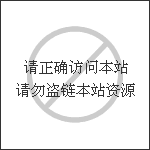经过评估,专家小组得出结论,在50 mg/kg全价饲料的最大建议使用水平下,该酊剂是安全的,在饮用水中的使用是安全的,前提是添加剂的总日摄入量不超过通过饲料食用时被认为安全的日摄入量。在缺乏数据的情况下,无法得出酊剂可能成为皮肤/眼睛刺激物或皮肤致敏剂的结论。部分原文报道如下:
The tincture derived from Verbascum thapsus L. (great mullein tincture) is intended to be used as a sensory additive in feed for all animal species. The product is a water/ethanol solution, with a dry matter content of ? 2.8% and contains on average 0.216% polyphenols including 0.093% flavonoids. According to a previous assessment, the additive was not characterised in full and about 82% of the dry matter fraction remained uncharacterised (representing 2.26% of the tincture). There was also uncertainty on the potential presence of iridoid glycosides in the tincture. Therefore, the Panel on Additives and Products or Substances used in Animal Feed (FEEDAP) could not conclude on the safety of the additive at the proposed use levels of up to 50 g/kg complete feed for all animal species or for the consumer. The applicant has provided new data which show that the unidentified fraction consists of crude fibre, other carbohydrates, and protein. The tincture also contains aucubin (0.004%). Considering the genotoxic potential of aucubin and other related iridoids, no conclusions can be drawn for long-living animals (pets and other non-food producing animals, horses and animals for reproduction). For short-living animals (animals for fattening), the FEEDAP Panel concludes that the tincture is safe at the maximum proposed use level of 50 mg/kg complete feed and that the use in water for drinking is safe provided that the total daily intake of the additive does not exceed the daily amount that is considered safe when consumed via feed. No safety concerns would arise for the consumer from the use of the tincture up to the highest safe level in animal nutrition. In the absence of data, no conclusions can be drawn on the potential of the tincture to be a dermal/eye irritant or a skin sensitiser.


